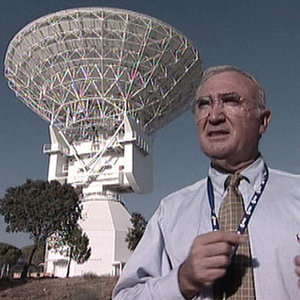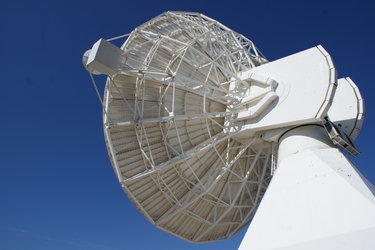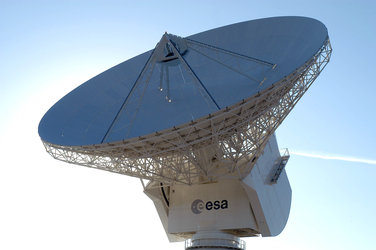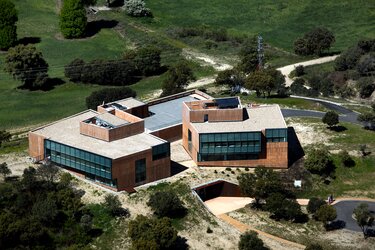European Apollo ground station pioneer
Spain's Valeriano Claros-Guerra arrived at the Maspalomas MSFN station in February 1969 to work for NASA as an INTA-paid graduate engineer. He graduated from the Technical University of Madrid in 1967, and initially worked in South Africa. He joined MSFN Maspalomas in February 1969, just a few months before Apollo 11.
He had three main roles: to look after the NASCOM (NASA Communications) circuits - the voice and data communications between Maspalomas station and Houston; to serve as the interface between the NASA station management and the local Spanish contractor employees; and to work shifts 'on console' during periods of direct tracking support.
At the time, there were some 130 US workers and 70 local nationals. "Few of the workforce on either side were bilingual, so my English was very useful," says Claros-Guerra.
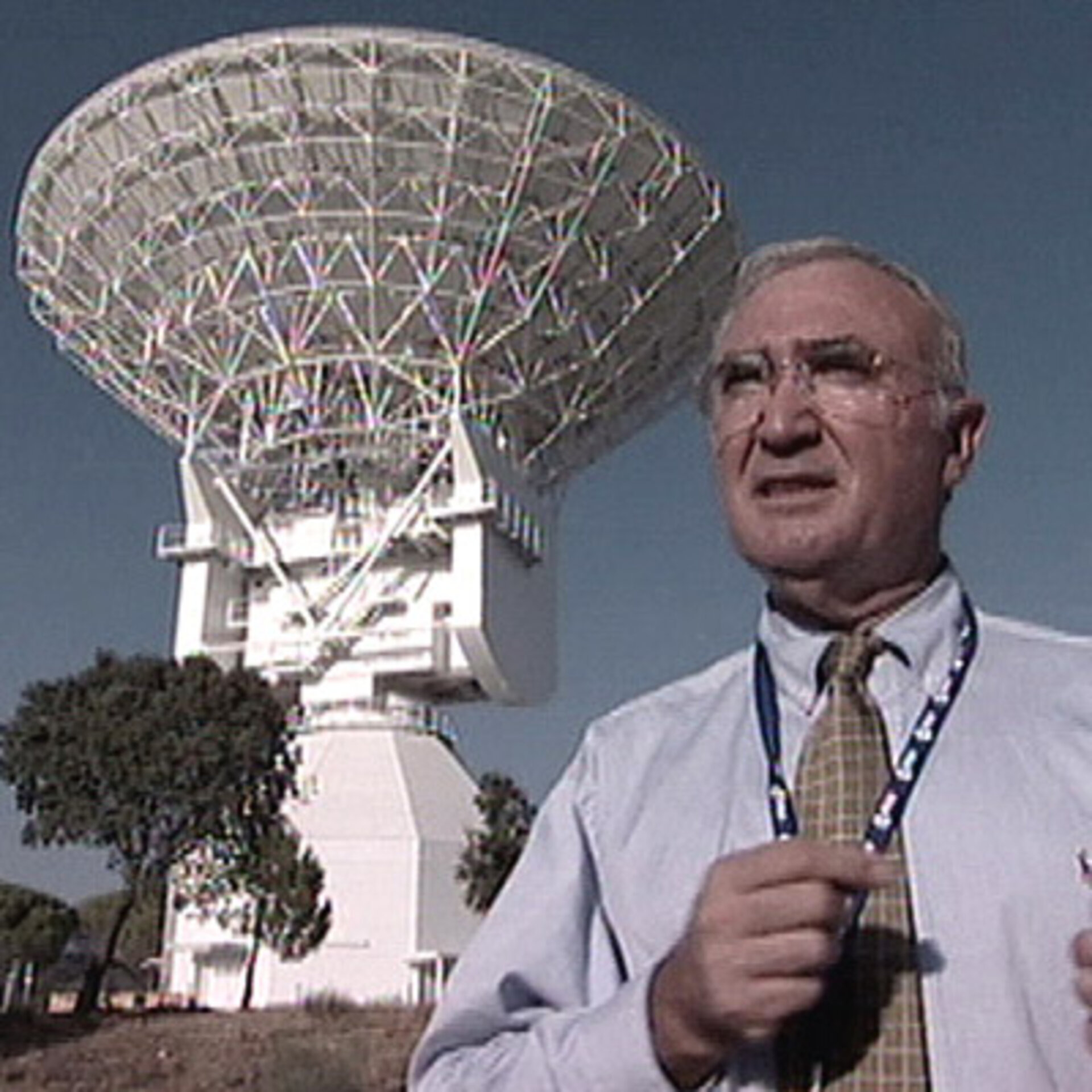
Valeriano Claros-Guerra served as INTA Deputy Director and as Operations and Communications Supervisor at Maspalomas Tracking Station, part of NASA's Manned Spaceflight Network on Gran Canaria, from 1969 to 1975. He supported a number of space programmes, including Apollos 10 through to 17 (including the historic Apollo 11 Moonlanding on 20 July 1969), ERTS (Earth Resources) and Skylabs 1 and 2.
He joined ESA in 1989, serving as Director of the Villafranca del Castillo Tracking Station(1) and as ESA's Representative in Spain, until 2004. In the late 1990s, Claros oversaw the planning and construction of ESA's Deep Space Antenna (DSA) Network, taking part in commissioning the 35 m DSA stations at New Norcia, Australia, and Cebreros, Spain.
In his final year with ESA, he served as Station Manager at Cebreros station. He retired from ESA in 2005.
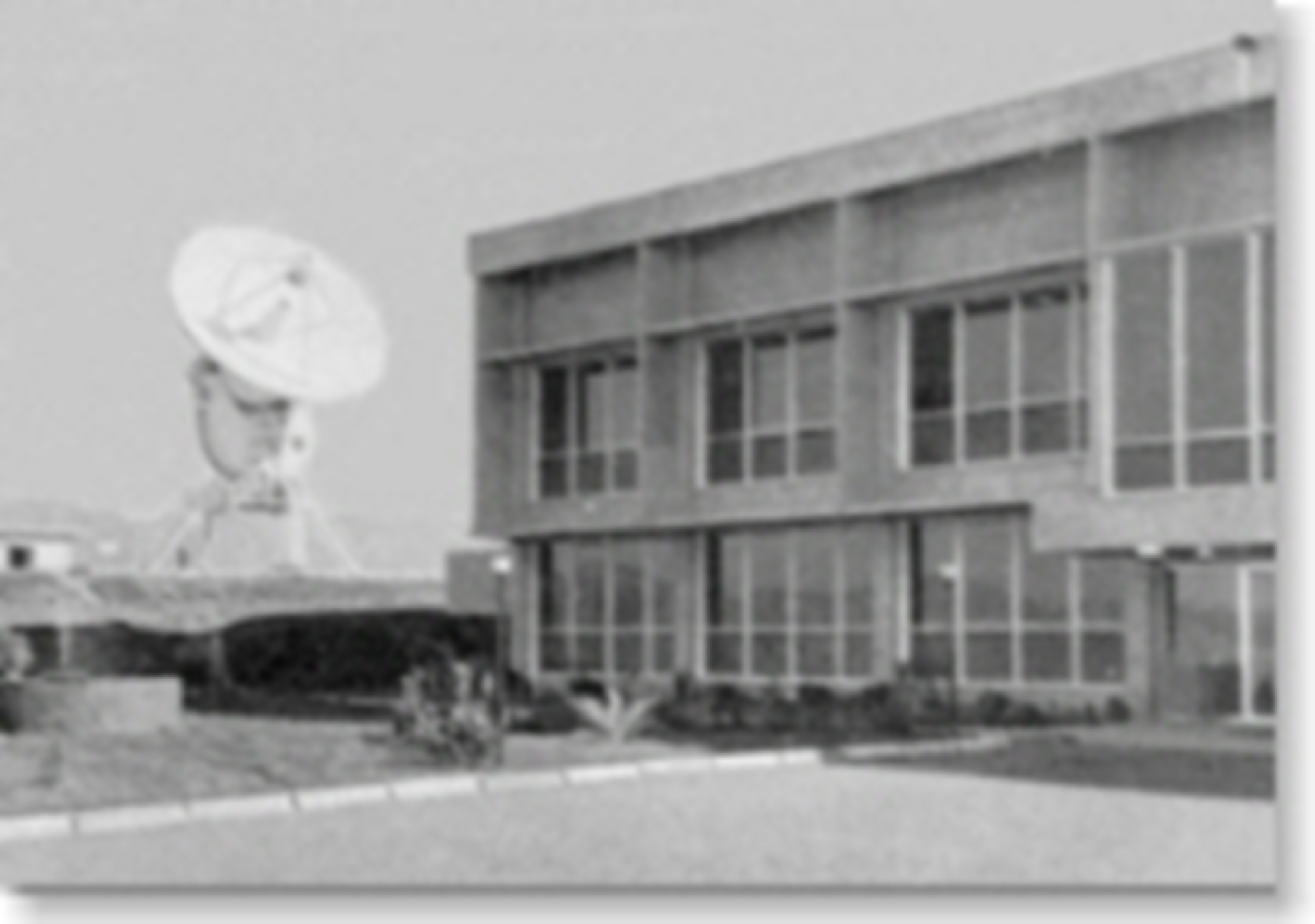
ESA: How did your work at the NASA Manned Spaceflight Network station at Maspalomas in 1969 involve Apollo?
Claros-Guerra
I was just a contract employee, but we were fully trained by NASA. I was sent to the Network Test and Training Facility, at NASA Goddard Space Flight Center, Greenbelt, Maryland, USA, to learn basic aspects of how NASA tracking and communications equipment worked. We, the local engineers, had very good theoretical knowledge of space flight communications, but we had no hands-on experience. The NASA people really helped.
In my main role, I oversaw the communication connection between us and Houston, linked via London, UK (until NASA funded the first Intelsat satellite communication station in Spain, also at Maspalomas). We picked up the Apollo crew's voice signal from the Moon and sent that on to Houston, so we could monitor what the astronauts were saying. It was all based on analogue technology, very little was digital as of yet, so the quality was not always perfect. But it worked.
On 19 July 1969, I pulled shift on the management console, controlling the circuits going back to the US. I was on shift from 1600 to 2400 UT - the astronauts were just getting ready to exit the Lunar Lander.
ESA: What was your role for the first Moon walk?
Claros-Guerra
For the Apollo 11 Moonlanding and first Moon walk, Maspalomas station was the real-time, 'hot' back-up for the MSFN station at Fresnedillas, Madrid. On 19 July 1969, I pulled shift on the management console, controlling the circuits going back to the US. I was on shift from 1600 to 2400 UT - the astronauts were just getting ready to exit the lunar lander when I finished, so there was no way I was going home! I stayed to see what happened and the first step was taken at 02:56 UT, 21 July.
I also helped monitor the controllers' voice communications between Spain and Houston; the circuits were sometimes very noisy and the Houston guys all spoke with Texan accents, so it was important to have extra 'ears' to make sure we understood their instructions.
We had a pool of talented, experienced engineers thanks to the NASA days, and this is perhaps one of the most important benefits to ESA stemming from the Apollo era.
ESA: How did Maspalomas station evolve after Apollo?
Claros-Guerra
Once Apollo ended, we supported ALSEP (Apollo Lunar Scientific Experiment Package), which was left on the surface of the Moon by the astronauts, and the Skylab missions - Skylab 4, the last one, operated from November 1973 until 8 February 1974. NASA had already started to reduce staffing and in 1975 NASA closed out Maspalomas.
Most of our functions were transferred to Madrid, and they asked us to pack up a lot of the equipment and ship it to the NASA station at Tananarive, on Madagascar, which we did. Ironically, some months after it arrived on the island, there was a coup d'état, and the shipment sat untouched for 17 years, when NASA was finally able to retrieve it. We departed Maspalomas, leaving it in semi-hibernation. The land had been expropriated from a local noble family to the Spanish government, who in turn had lent it out to NASA. If it wasn't used for a period of 20 years, ownership would revert to the family, which is what might have happened.
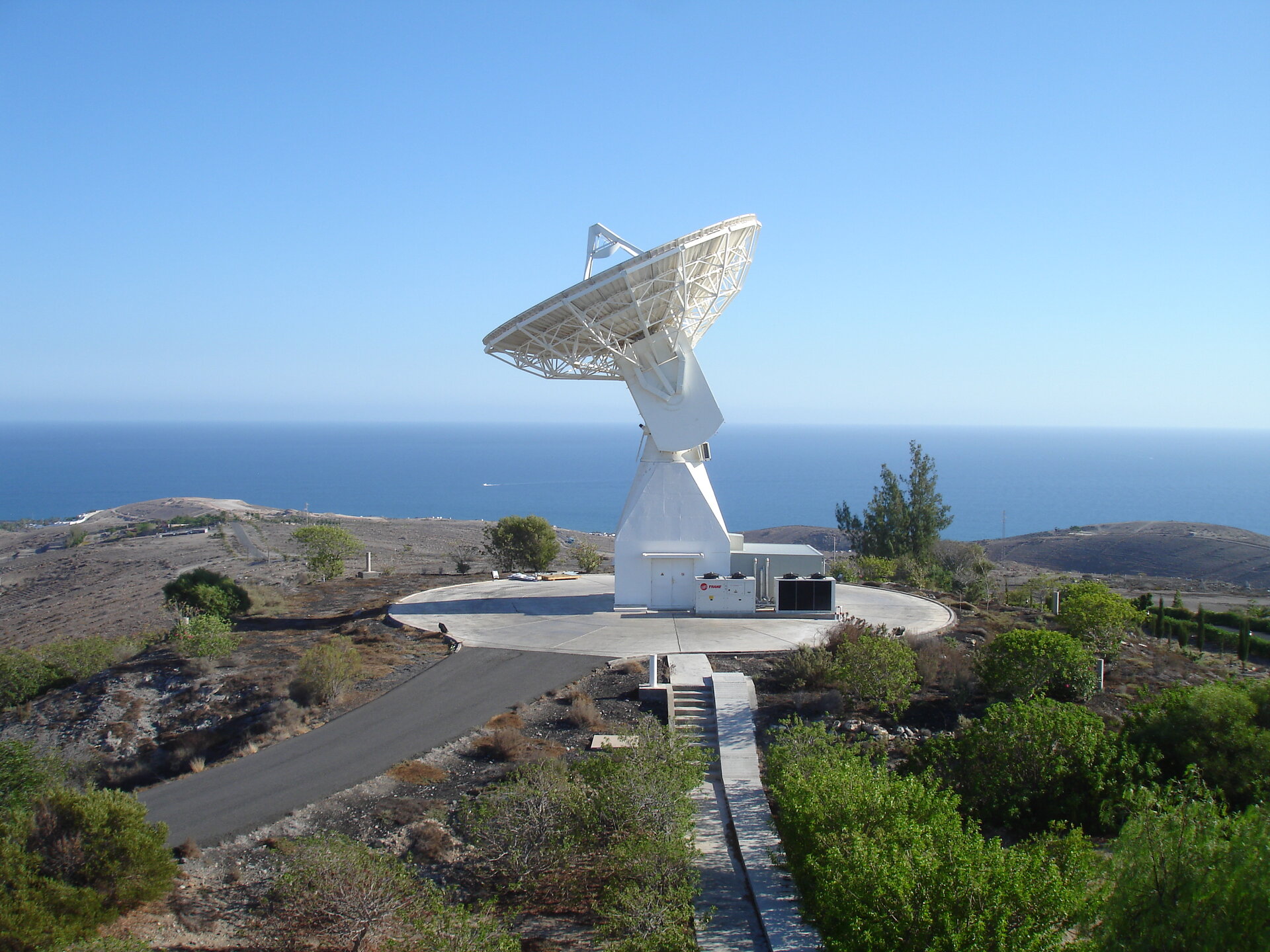
ESA: But then ESA came along?
Claros-Guerra
Yes - in the early 1980s, ESA's Earth observation missions needed tracking support and Maspalomas was reopened by the Spanish government, with INTA as the local operator. We began by supporting Landsat and ERS-1, and several antenna terminals were built, including the current largest, a 15 m station, in 1991.
ESA, established in 1975, was starting from scratch with its missions and had very limited tracking resources. Spain had a lot to offer. ESA established the Villafranca tracking station in 1978, headed by another Spanish ex-Apollo team member, Andrés Ripoll (who was appointed Head of the ESA Astronaut Centre in 1989), and me, as INTA Maintenance and Operations Manager, and it made sense to reopen Maspalomas to support the EO missions.
We also had a pool of talented, experienced engineers thanks to the NASA days, and this is perhaps one of the most important benefits to ESA stemming from the Apollo era. Some had already left to join ESA's European Space Operations Centre, in Germany, including the late Felix Garcia-Castañer, who went to ESOC in 1975 and served as the Centre's Director from 1991 until 1997. But we've always been strong in this regards - I think you can say that the knowledge acquired by engineers in Spain with NASA was certainly beneficial to ESA in later decades.
ESA: And today?
Claros-Guerra
Today, the Maspalomas site is still owned by INTA, and operations are performed on behalf of ESA by INSA (Ingeniería y Servicios Aeroespaciales S.A.), a commercial joint enterprise, and the 10m and 15m ESTRACK(2) antennas support Earth Observation satellites like ERS-2, ALOS, SPOT and Landsat, and scientific missions like Cluster. The site has also expanded, and there are more activities now than just those supporting ESA. All of ESA's ESTRACK stations, by the way, are now remotely operated from ESOC in Germany for routine mission phases.

ESA: What about NASA's former Cebreros site, where ESA's Deep Space Antenna DSA 2 is now operating?
Claros-Guerra
In the early 2000s, ESA decided to build its own deep space stations to support the growing number of distant missions like Mars Express, Venus Express and Rosetta. The first, DSA 1, was built at New Norcia, Australia, and the second had to be sited somewhere 120° away.
Like Maspalomas, the Cebreros site is owned by INTA and formerly hosted a NASA DSN station, which was primarily used in the 1960s and 70s for tracking, data acquisition and commanding for Apollo and interplanetary missions such as Viking. The station was closed in 1987, and NASA consolidated all their European DSN activities at Robledo, Madrid. We knew the site was there, unused, and so it made sense to repeat the success we had had with reopening Maspalomas for ESA.
The idea was discussed by all sides - including ESA, INTA, the Spanish government - and was accepted; in November 2004 Cebreros reopened with a new, state-of-the-art 35 m antenna, just in time to track ESA's Venus Express on its hugely successful mission. Today, it also tracks Mars Express, Herschel and Planck, these last two now orbiting the L2 'virtual' Lagrangian point, 1.5 million km from Earth. Cebreros is also operated by INSA on behalf of ESA, and the site is leased by the Agency for €1 per year for 75 years.

ESA: Where will you be on 20 July this year - 40 years since your late shift at Maspalomas?
Claros-Guerra
There is a reunion of all the Spanish 'NASA old-timers' at Fresnedillas Town Hall. The group will visit the old NASA MSFN station, now in use by Spain for official communications services, and the current NASA Robledo DSN station, near Madrid, where the old Apollo antenna is still in use to train students in radio astronomy. We're expecting about 120 attendees, including 15 or so from the US. It's going to be quite a celebration!
Many ground station engineers have spent decades working with or for NASA, ESA, INTA or one of the contracting companies - it's really a big family and they have contributed immensely to making space exploration a success for American, European and many other nation's missions.
----
Editor's notes:
Access a related news article here.
The Villafranca del Castillo Tracking Station has since become ESA's European Space Astronomy Centre (ESAC) hosting not only ESTRACK stations but also scientific operations centres for ESA's astronomy and planetary missions, along with their scientific archives.
- ESA's core ESTRACK network comprises 13 terminals at 9 stations in 6 countries: Kourou (French Guiana), Maspalomas, Villafranca and Cebreros (Spain), Redu (Belgium), Santa Maria (Portugal), Kiruna (Sweden) and Perth and New Norcia (Australia).


